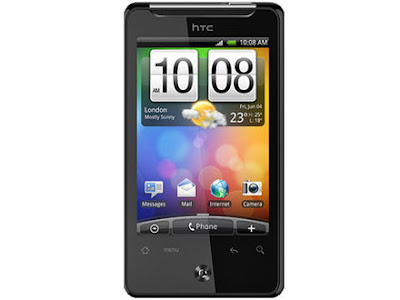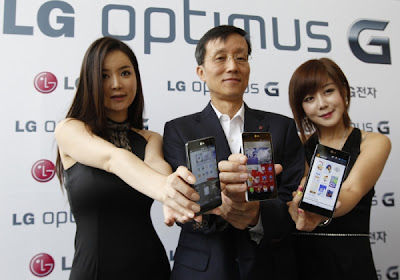 |
| Smasung Galaxy Victory Mobile Phone |
What would you say if I asked you what is the color of your cell phone? The vast majority would say black. Some are gray and others are white, but most are black. Some are special colors like red or pink after movies or causes, but most are black.
Stay tuned because if Sprint, Samsung and LG have their way Green will be the next hot color.
Plenty of customers care about the environment. They actively shop with green in mind. There has been very little in the electronics section of the store to capture their imagination. All the hot technology like the iPod, iPhone and iPad or Google Android or Nexus One phones capture the imagination and the headlines, but as far as I can see talk nothing about them being green.
That may be about to change.
Green cell phones are the next big wave. Customers have not proven they want these yet. We will have to watch and see, but there is historically a growing segment of the market who would prefer this. Some are very green consumers like the actor Ed Begley and some are more moderate, but they are all definitely green.
It's not just the green color on the outside that lets you tell the world, it's the eco-friendly, environmentally savvy inside that can change the industry, or at least a slice of it.
Samsung Mobile has a March To A Million program trying to collect and recycle at least one million cell phones by the end of the year.
Sprint's Recycle For Victory is another recycling program with similar hopes that the consumer will spend the effort and do the right thing. They say they are the first and only US telecom provider to publicly commit to set long term goals to recover for reuse or recycle the equivalent of 90% of handsets sold by 2017.
Will they do it? Their collection rate for 2009 was 42%, and that was up from 34% the year before. They are heading in the right direction. Their programs have taken 20 million cell phones from ending up in the landfill since 2001.
They have a long way to go, but something tells me they could indeed do this.
These two companies support many green programs. In 2007 Sprint established a list of priorities. Reduce impact on global climate change. Reduce use of natural resources. Promote a socially and environmentally sound supply chain. Reduce the environmental impact of their products and services.
If you think about it this is nothing over the top. It is just a responsible goal and promise to the marketplace. Something that I hope we will see from other companies.
Sprint is the first US wireless carrier to establish green design standards for all their next generation devices that run on their network. They also have a buy-back program to get the old handsets out of the back of the drawer or the trash can.
The next big step is the green phone.
The LG Remarq meets Sprints eco-friendly standards. It is made of 19 percent recycled plastic. Yes your cell phone could have been a plastic bag yesterday. OK a different plastic, but you get the point.
Not only that, but now it is 87 percent recyclable. This is truly amazing, but starts us asking what ever happened to the mountains of old technology sitting out there somewhere, in piles, sitting right next to all the old laptops and television sets and milk bottles.
Another device is by Samsung with an eco-friendly charger and case. Looking at the packaging it is 20 to 40% smaller than it used to be.
Article Source: Ezine Articles
Stay tuned because if Sprint, Samsung and LG have their way Green will be the next hot color.
Plenty of customers care about the environment. They actively shop with green in mind. There has been very little in the electronics section of the store to capture their imagination. All the hot technology like the iPod, iPhone and iPad or Google Android or Nexus One phones capture the imagination and the headlines, but as far as I can see talk nothing about them being green.
That may be about to change.
Green cell phones are the next big wave. Customers have not proven they want these yet. We will have to watch and see, but there is historically a growing segment of the market who would prefer this. Some are very green consumers like the actor Ed Begley and some are more moderate, but they are all definitely green.
It's not just the green color on the outside that lets you tell the world, it's the eco-friendly, environmentally savvy inside that can change the industry, or at least a slice of it.
Samsung Mobile has a March To A Million program trying to collect and recycle at least one million cell phones by the end of the year.
Sprint's Recycle For Victory is another recycling program with similar hopes that the consumer will spend the effort and do the right thing. They say they are the first and only US telecom provider to publicly commit to set long term goals to recover for reuse or recycle the equivalent of 90% of handsets sold by 2017.
Will they do it? Their collection rate for 2009 was 42%, and that was up from 34% the year before. They are heading in the right direction. Their programs have taken 20 million cell phones from ending up in the landfill since 2001.
They have a long way to go, but something tells me they could indeed do this.
These two companies support many green programs. In 2007 Sprint established a list of priorities. Reduce impact on global climate change. Reduce use of natural resources. Promote a socially and environmentally sound supply chain. Reduce the environmental impact of their products and services.
If you think about it this is nothing over the top. It is just a responsible goal and promise to the marketplace. Something that I hope we will see from other companies.
Sprint is the first US wireless carrier to establish green design standards for all their next generation devices that run on their network. They also have a buy-back program to get the old handsets out of the back of the drawer or the trash can.
The next big step is the green phone.
The LG Remarq meets Sprints eco-friendly standards. It is made of 19 percent recycled plastic. Yes your cell phone could have been a plastic bag yesterday. OK a different plastic, but you get the point.
Not only that, but now it is 87 percent recyclable. This is truly amazing, but starts us asking what ever happened to the mountains of old technology sitting out there somewhere, in piles, sitting right next to all the old laptops and television sets and milk bottles.
Another device is by Samsung with an eco-friendly charger and case. Looking at the packaging it is 20 to 40% smaller than it used to be.
Article Source: Ezine Articles



























